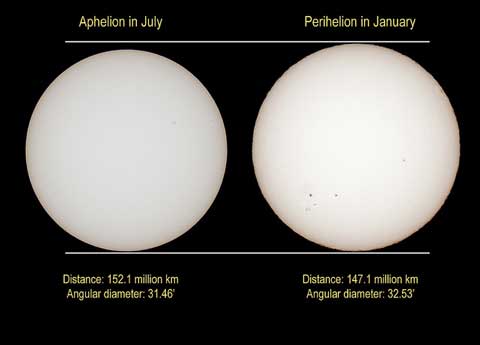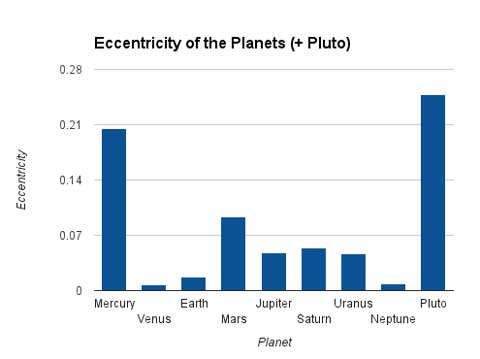Perihelion and Eccentricity

The sun as seen from Earth at Aphelion (farthest distance from the sun) and Perihelion (closest distance to the sun).
Image Credit: BZD via flickr
As planets revolve around our sun, none of them move in a perfect circle; the planets' orbits, including the Earth's orbit, are elliptical.
Consequently, every January the Earth makes its closest approach to the sun at a point called the perihelion. When it's as far away from the sun as possible, the Earth reaches the opposite point: the aphelion. Earth most recently reached perihelion on January 2, 2013.
Physicists can rank how far an orbit deviates from a perfect circle on the scale of eccentricity. Planets with higher eccentricities have more stretched out orbits, and planets with an eccentricity of zero would have a perfectly circular orbit.
All orbiting planets fall between 0 and 1 on the eccentricity scale. Planets with an eccentricity equal to or greater than one move in parabolic and hyperbolic trajectories, respectively. Celestial bodies that have eccentricities this high would eventually shoot away from the sun after zipping closeby.
You can see the planets ranked by eccentricity below. Although Pluto was demoted to dwarf planet status a few years ago for other reasons, it still wins the eccentricity race.

More Information:














